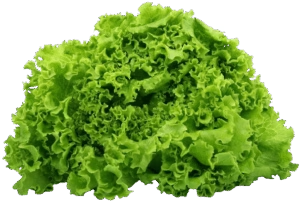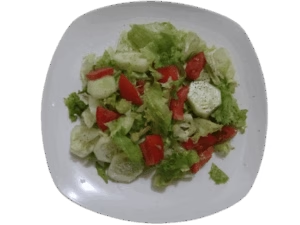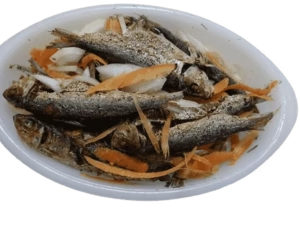TABLE OF CONTENTS
Burdock or Arctium Lappa is one of those herbs that has been used for decades but is now becoming a household name in Western societies. Arctium Lappa is said to have originated from two (2) sources, Greek and Latin. The first part of the word Arctium reportedly originated from the Greek word Arktos or Celtic Arth which means ‘bear’ referring to the plant’s prickly fruit. On the other hand, Lappa is said to originate from the Latin word Lappae and is interpreted as ‘hold fast’ or ‘seize.’
The word Burdock is from the old Scottish/Gaelic Doc. meaning, a large leaf and Burre for a ‘bur.’ Nonetheless, Pedanius Dioscorides, the famed Greek physician, botanist and pharmacologist called it Arcteion meaning ‘Bear plant’ in Greek. Dioscorides were popular for making concoctions with burdock root to help with certain ailments; one such being the famed decoction of the seed and root for toothache.
However, after its introduction in North America, the herb became known as the ‘Bear medicine’ by native healers. The name ‘Bear medicine’ was due largely to the plant’s resemblance to that of a ‘bear fur’. To date, the herb continues to make strides in many parts of the world. It has been promoted in Chinese society as healthy and nutritive food and a therapeutic aid in Europe, Asia and North America.
Now, let’s discuss some of the purported benefits of this wonderful plant. Let’s discuss!
The Discussion
What is Burdock Root?
Burdock root is a member of the aster family and is mostly grown in rural or disturbed woodland. It is an aggressive weed which typically flowers in its 2nd year. The nature of its growth is described by many herbalists as one of nature’s ‘hitchhikers’ as its velcro-like burrs tend to ‘hitch a ride’ on the clothing or shoes of those that pass nearby it. One of the most distinctive features of the burdock root is its large basal leaves which can grow to over eighteen (18) inches long. The edges are most often irregular rippled or wavy.
Further, the flower stalks of mature plants can reach up to six (6) inches in height but are more typically grown to around three (3) inches. The plant has some unique characteristics which have been folklore for treating different ailments, for example, the round flower head resembles a human head while the prickles that of the human hair, hence its usage in treating baldness. On the other hand, the hard seeds have been suggested for use in removing hard stones such as kidney stones or gallstones from the body by breaking up the stones which are then expelled by the urine.
Nonetheless, increasing research has denoted that this plant does have some great benefits that can indeed contribute to one’s overall health and well-being these include detoxifying the blood, improving skin tones and texture, pro-diabetic, diuretic, and improving digestive health as well as boosting the immune system.
In this article, we will be discussing Six (6) scientifically proven health benefits of consuming burdock root. These include helping to purify the blood, and skin health, may improve diabetes, and digestive health and helping to boost the immune system. We will also discuss how you can brew your unique cup of burdock root tea.
Enjoying this burdock root post, why not check out another nutrient pack tea, Oolong?
Six (6) Health Benefits of Burdock Root
- May help to purify the blood.
- Skin health.
- Diabetes health.
- Being diuretic.
- May help with digestive health.
- May help to boost the immune system.
Burdock Root and the Blood
Burdock root is considered an effective blood purifier, which means that it can help the liver and kidneys to detoxify. As such, it can remove toxins from the bloodstream. Further, according to (Lin SongChow et. al. 2000), burdock root protects the liver from carbon tetrachloride-induced damage, which they attribute to its antioxidant activity on liver cells (hepatocytes).
Tetrachloride is a manufactured chemical that is usually used to make refrigeration fluid and propellants for aerosol cans. The chemical is also used in households as a spot remover for clothing, furniture and carpeting.
In some places, tetrachloride can seep into drinking water or be inhaled which damages the liver and kidneys. However, these chemicals are soon to be of the past as they are gradually being phased out by manufacturing laws. Further, burdock root has about 5% fiber which research has shown may be able to protect against toxicity from various food colours (Nutr. Rep. Int’l. 1979).
Burdock Root and Skin Health
The fresh root is used to treat some skin disorders such as eczema and keratosis pilaris due to its anti-microbial and anti-fungal properties and its detoxifying effects on the body. This in effect can help promote blood circulation to the skin surface, improving skin quality and texture and alleviating certain skin conditions.
Burdock Root and Diabetes Health
Burdock root is considered pro-diabetic due to its high inulin level (45-50%). French herbalists purport that the root may help to lower blood sugar levels in diabetics due to its easily digestible starches. As such, it is said to have an inhibitory effect on glucosidase activities.
This inhibition lowers the rate of glucose absorption through delayed carbohydrate digestion which extends the digestion time (Mitsuo et. al. 2005). Inhibitors of glycosidase are potential therapeutic agents in treating diabetes mellitus.
Burdock Root and its Diuretic Properties
Burdock root has significant diuretic action due to its ability to detoxify the body and purify the blood. As such, consuming this food will induce urination as it expels toxins from the body. This diuretic action can benefit the liver, kidneys and lymphatic system. As such, it is recommended that you remain hydrated if you have added burdock root to your dietary routine.
Burdock Root and Digestive Health
Burdock root may reportedly aid the digestion process due to its inulin and rich fiber content. This is due to its oil, which may increase bile secretion and promote the absorption of fats and oils through the small intestine, which in turn benefits both the liver and the gallbladder.
This digestive action can be particularly helpful to persons with long-standing indigestion issues. Further, burdock root can also help to alleviate symptoms of coughs, colds and flu-like symptoms due to its antibacterial properties. It does this by targeting the phlegm and mucus which are contributors to these issues.
Burdock Root and the Immune System
According to Lin et. al. (2002), the extracts from the different parts of the burdock are considered good for health and can help enhance the immune system, improving metabolic functions. Further, burdock root contains many nutrients such as potassium, calcium, iron, magnesium, vitamin C, copper, zinc, sodium, and vitamin A as well as the B-vitamins – Thiamin (B1) and riboflavin (B2). These nutrients have been proven to improve the immune system and aid in one’s overall health and well-being.
You can watch the Video on Burdock Root Benefits here:
Illustrative Summary
Here is an illustrative summary of the benefits of some of the purported benefits of BURDOCK ROOT.
How to brew that “perfect” cup of Burdock Root tea
Ingredients
- 2-3 pieces of burdock root.
- 1 to 2 cups of water.
Instructions
- Rinse pieces of burdock root and add them to a pot with water and bring to a boil.
- Let it boil for 5-10 minutes.
- Serve by adding your preferred choice of sweetener or consume as-is.
Let’s Sum Up!
Burdock roots have long been used for centuries for food and their purported health benefits. The herb contains many active ingredients that have been shown to possess many therapeutic effects on various diseases. The herb is said to be able to detoxify the body and purify the blood, heal common skin conditions, balance blood sugar and aid in digestive health and weight management, especially due to its diuretic properties.
However, like with ‘all things good’ one must ensure that caution is taken when consuming this herb to prevent any contraindications effects, especially for those who are on medications for diabetes, diuretics and blood thinning. Also, women who are pregnant and/or breastfeeding must ensure that they consult a medical professional before consumption of this tea. This level of caution is to help you ascertain the ideal amount that would be suitable for your condition so that you are not put at risk for any adverse health effects.
Enjoying this burdock root post, why not check out another nutrient pack tea, Oolong?
The article was first Published on October 19, 2018. Updated: March 18, 2022. Further updated: June 29, 2024 and January 17, 2025.
- Lin, S.C. Lin, C.H, Lin, C.C.et. al. (2002). Hepatoprotective effects of arctium lappa linne on liver injuries induced by chronic ethanol consumption and potentiated by carbon tetrachloride, J.Biomed. Sci. 9, pp. 401-409.
- Mitsuo, M. Nobuo, Y & Katsuya, T. (2005). Inhibiting compounds of alpha glucosidase activity from arctium lappa. J. Oleon Sci, 54, pp. 589-594.
- SongChow, L. Tsao-Chuen Chung, Chun-Ching Lin, Tzuu-Huei Ueng, Yun-ho Lin. (2000). Hepatoprotective effects of arctium lappa on carbon tetrachloride and acetaminophen-induced liver damage. The American Journal of Chinese Medicine, (28) 2, pp. 1793-6853.
- Tsujita et. al. (1979). Nutrition Report International.






